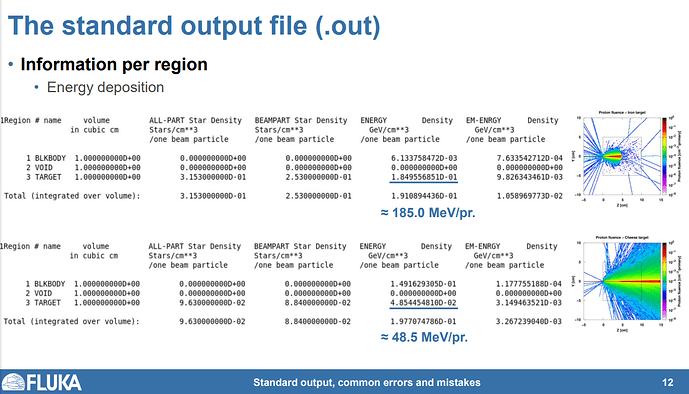Dear FLUKA experts,
I am a beginner of FLUKA and I tried to simulate energy deposition of protons. My purpose was to get the accurate value of energy deposition in the target, e.g., the energy deposition of a 100 MeV proton in water is 90 MeV (just an example, may not be accurate).
So I set a 20cm* 20cm* 20cm target and let the proton beam penetrate the target. The data in my .out file shown below.
1Region # name volume ALL-PART Star Density BEAMPART Star Density ENERGY Density EM-ENRGY Density
in cubic cm Stars/cm**3 Stars/cm**3 GeV/cm**3 GeV/cm**3
/one beam particle /one beam particle /one beam particle /one beam particle
1 BLKBODY 1.000000000D+00 0.000000000D+00 0.000000000D+00 6.459018975D-04 2.414527592D-04
2 VOID 1.000000000D+00 0.000000000D+00 0.000000000D+00 0.000000000D+00 0.000000000D+00
3 TARGET 1.000000000D+00 9.910000000D-02 9.450000000D-02 9.764148484D-02 1.508375133D-03
Total (integrated over volume): 9.910000000D-02 9.450000000D-02 9.828738674D-02 1.749827892D-03
After that, I learned this lecture and found
- Does this mean the value of energy deposition in my .out file is “9.764148484D-02”?
- I just set 1 bin in USRBIN card, would I get the accurate data of energy deposition?
Here is my .out file and .inp file.
10MeVproton.inp (1.1 KB)
10MeVproton001.out (90.5 KB)
Thank you so much for your attention!
Zong
